29 Brilliant Ways to Use Vinegar That May Surprise You
It’s cheap. It’s available in every supermarket and home center in the universe and so helpful around your home, you may have a difficult time believing it. That’s the power of white vinegar—the same vinegar you cook with and pour on your salad!
Windows
Add 1/4 cup white vinegar to a quart of very warm water to make a good window cleaner. Wipe with a microfiber cloth and your windows will sparkle.
Computer mouse
Clean your mouse with a removable tracking ball with a 50/50 vinegar-water solution. First, remove the ball from underneath the mouse by twisting off the cover. Dip a clean cloth into the solution, wring it out, and then wipe the ball clean.
Next, remove fingerprints and dirt from the mouse itself. Then use a vinegar-moistened cotton swab to clean out the gunk and debris from inside the ball chamber. Allow all parts to dry a couple of hours before reinserting the ball.
Laundry
Instead of fabric softener or dry sheets, add 1/2 (one-half) to 1 cup vinegar to the last rinse in your washing machine (as you would liquid softener). Your clothes will come out soft because the vinegar helps to remove every trace of laundry detergent, which causes fabrics to stiffen.
Watermarks
Vinegar will dissolve hard-water marks like those on shower doors, faucets and in vases. If the vinegar is hot (heat in the microwave) it works even faster.
Ballpoint pen ink
Got ink marks from a ballpoint pen adorning a wall, desktop, or other inappropriate space? No worries. Dab full-strength white vinegar on the ink using a cloth or a sponge. Repeat until the marks are gone. Then buy your child a nice big sketch pad.
Dishwasher
Instead of pricey commercial rinse agents, fill that little reservoir in your dishwasher with white vinegar. Your dishes will sparkle. Refill often. If your dishwasher does not have this feature, simply add 1/2 to 1 cup (depending on the hardness of your water) to the last rinse.
Windshield
Wash your windshield with full-strength vinegar—avoiding painted areas—to help keep ice and frost at bay.
Wallpaper
Vinegar makes a great wallpaper remover. First, remove all the wallpaper you can by simply pulling it off. You’ll probably get only the top layer of the paper, but that’s okay. Now spray full-strength vinegar on what remains. This will begin to dissolve the glue. Once softened you’ll be able to remove the rest without harsh chemicals.
Scissors
When scissors begin to stick or get grimy, don’t wash them with water. That won’t fix the problem and only expose the fastener and blades to rust. Instead, wipe down the blades with a cloth dipped in full-strength white vinegar. Dry well with a rag or dish towel.
Carpet
Scrub light carpet stains with a mixture of 2 tablespoons salt dissolved in 1/2 cup white vinegar. Once completely dry, vacuum the area.
Steam-clean microwave
Steam makes short work of cleaning the inside of a microwave oven. To clean your microwave, place a glass bowl filled with 1/4 cup vinegar plus 1 cup water, and zap the mixture for five minutes on the highest setting. Once the bowl cools, dip a cloth or sponge into the liquid and use it to wipe away stains and splatters on the interior.
Window blinds
Remove the torture of cleaning mini-blinds with this white-glove treatment: Just put on a white cotton glove and moisten the fingers in a solution made of equal parts white vinegar and hot tap water. Then slide your fingers across both sides of each slat and prepare to be amazed. Use a container of clean water to wash the glove periodically and then keep going.
Tenderize
Use the acidity of vinegar to tenderize meat. I add several tablespoons to pot roast, soups, and stews. If you have balsamic vinegar it will add a wonderful flavor, but white vinegar tenderizes just as well. Your guests will think you are serving them filet mignon.
Exposed brick
Go over the bricks with a damp cloth dipped in 1 cup white vinegar mixed with 1-gallon warm water. Your hearth will look so good you’ll wonder why you didn’t do this sooner! You can use the same process on brick flooring, too.
Paneling
If that paneling is looking dull and dreary, perk it up with this simple remedy: Mix 2 cups warm water, 4 tablespoons vinegar and 2 tablespoons olive oil in a container. Mix well then apply with a clean cloth. Allow to soak into the wood for a few minutes, then polish with a dry cloth. That’s it! Looks fabulous doesn’t it?
Remove waxy buildup
To remove built-up furniture wax from a piece of wood furniture, dip a cloth in equal parts vinegar and water and squeeze it out well. Then carefully clean away the polish, moving with the grain. Wipe dry with a soft towel or cloth. Most leather tabletops will come clean simply by wiping them down with a soft cloth dipped in 1/4 cup vinegar and 1/2 cup water. Use a clean towel to dry off any remaining liquid.
Leather
To restore that beautiful leather sofa or other furniture, to its former beauty, mix equal parts white vinegar and boiled linseed oil in a recycled spray bottle, shake it up well, and spray it on. (Please don’t try to boil your own linseed oil! It’s a product available in home centers or online.) Spread it evenly over your leather furniture using a soft cloth, give it a couple of minutes to settle in, then rub it off with a clean cloth.
Hide scratches
To make scratches on wood furniture less noticeable, mix some distilled or cider vinegar and iodine in a small jar and paint over the scratch with a small artist’s brush. Use more iodine for darker woods and more vinegar for lighter shades.
Clean coffeemaker
Weak or bitter coffer can be the outcome when that coffeemaker hasn’t been cleaned in like forever. It’s so easy to clean it. Do this: Fill the decanter with 2 cups white vinegar and 1 cup water. Place a filter in the machine, and pour the solution into the coffeemaker’s water chamber. Turn on the coffeemaker and let it run through an entire brew cycle. Remove the filter and replace it with a fresh one. Then run clean water through the machine for three complete cycles. Clean your coffeemaker after 80 brew cycles—after 40 cycles if you have hard water.
Piano keys
Here’s an easy and efficient way to get those grimy fingerprints and stains off your piano keys. Dip a soft cloth into a solution of 1/2 cup white vinegar mixed in 2 cups water, squeeze it out until there are no drips, then gently wipe off each key. Use a second cloth to dry off the keys as you move along, then leave the keyboard uncovered for 24 hours.
NOTE: If your piano is older than 50 or 60 years, chances are those keys are made of ivory. In that case, don’t use vinegar. Instead, you want to use a solution of mild dish liquid and warm water. If they have turned yellow, do not attempt to make them white again. That is considered antique patina, and it makes your piano unique and likely, more valuable.
Candle wax
Did a candle go nuts and drip wax on your fine wood furniture? Do this: First, soften the wax using a hairdryer set on its hottest setting and blot up as much of that softened wax as you can with paper towels. Then remove what’s left by rubbing with a cloth soaked in a solution made of equal parts white vinegar and water. Wipe clean with a soft, absorbent cloth.
Drains
Combining vinegar and baking soda is one of the most effective ways to unclog and deodorize drains. Used in appropriate proportions, it’s also far gentler on your pipes—and your wallet—than commercial drain cleaners. Use a funnel to pour 1/2 cup baking soda and 1 cup vinegar into the drain. When the foaming subsides, flush with hot tap water. Wait five minutes, and then flush again with cold water. Besides clearing blockages, this technique also washes away odor-causing bacteria.
Copper
You can clean copper-bottom pots and other copper items with a paste made of salt and vinegar. Caution: (Do not use this on decorative copper with a lacquer coating.)
Stainless Steel
To clean stainless steel fixtures (chrome, too) and appliances, apply a light misting of undiluted white vinegar from a spray bottle. Buff with a soft cloth moving with the grain, to bring out the brightness.
Floors
Wash your vinyl and ceramic tile floors with a mixture of hot water and white vinegar (1 cup per gallon of water). No need to rinse and you will never have that nasty film that plain water leaves behind. And Wow! Your floor will shine like a new penny.
Sunburn
White vinegar will take the sting out of sunburn. Just soak a towel and apply to the burn. The smell is far more tolerable than the pain of a sunburn. Caution: Never self-treat a severe burn. Contact your health professional immediately if you have any doubt.
Water rings
To remove marks left by wet glasses on wood furniture, mix equal parts vinegar and olive oil and apply it with a soft cloth while moving with the wood grain. Use another clean, soft cloth to shine it up. In the future, make sure coasters are handy to prevent future water rings! Dab them with a sponge soaked in full-strength white vinegar to get white water rings off leather furniture.
Steam iron
Clean your steam iron from the inside out. Fill the steam reservoir with white vinegar and heat to the hottest setting (after you’ve consulted the Owner Manual to ensure your iron is okay with this). It’s going to steam vinegar so get prepared for a strong smell. You will see all kinds of hard water deposits come out of the steam holes. Empty remaining vinegar, fill with water, and allow to steam well to remove all traces of vinegar. Repeat as necessary.
Waterpik
If you use a Waterpik water flosser, you may have noticed it can get skanky over time. No worries! Every couple of weeks, fill the reservoir with white vinegar. Allow it to sit for a few minutes, then turn it on pointing the pick end into the sink (not your mouth!), and let it run until the reservoir is empty. Follow with several rounds of water to clean and clear the machine.
Everyday Cheapskate participates in the Amazon Services LLC Associates Program, an affiliate advertising program designed to provide a means for us to earn from qualifying purchases, at no cost to you.

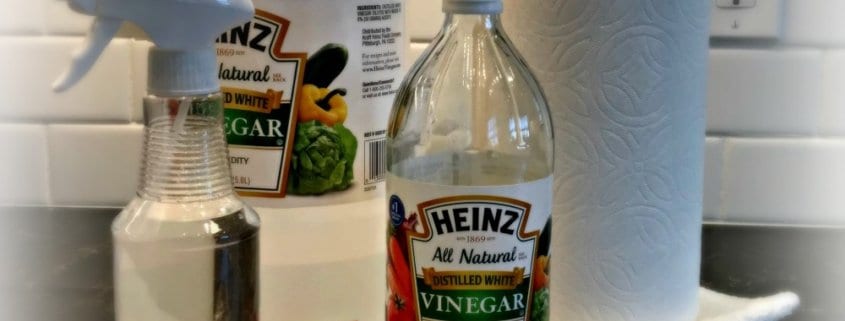

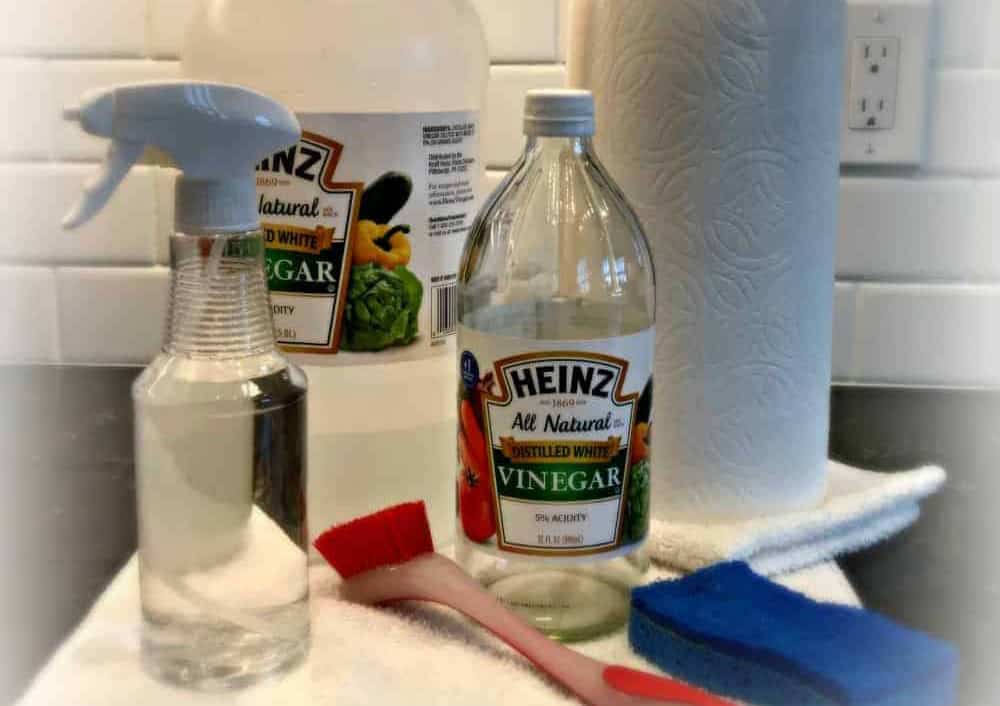


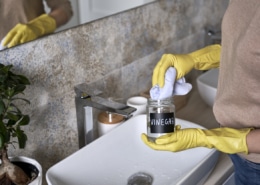
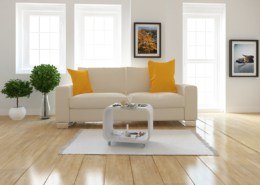
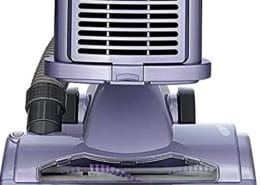
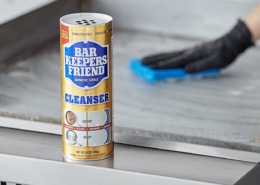
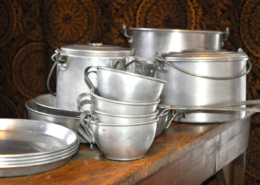
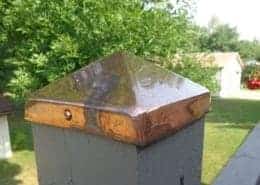
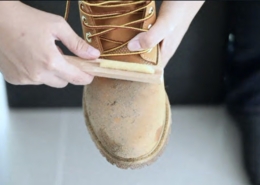
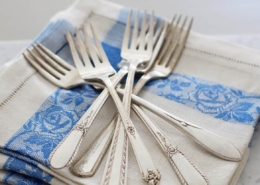


How can I remove contact paper from glass or wood furniture?
Thanks in advance.
I would follow the same protocol for removing stickers from wood and or glass surface: Get a plastic putting knife and a hair dryer. Soften the contact paper’s adhesive starting in one corner with the hair dryer in one hand and then use the putty knife in the other hand to gently scrape it up.
I use white vinegar for burns (curling iron, minor kitchen burns). Dab the burn immediately and often and you normally will not blister and the burn will not be visible the next day.
I used your weed killer recipe of vinegar, table salt and Dawn at our new seasonal campsite last month. I don’t have a sense of smell and got a chuckle when I heard a neighboring teen go into their camper and say it smelled like pickles outside. Haha!
I say my husband is using salad dressing when he does the weeds with that combination. It really works!
In the latest Consumer Reports, they state that using vinegar in dishwashers, washing machines, and irons were on their list of “8 Vinegar No-Nos” —-what do we believe???
I’ve read similar things. But I weigh that against the harm done to appliances by hard water. Ours is incredibly hard, and I add vinegar to every load of dishes and laundry. My dishwasher and washing machine are still in perfect condition after many years. It’s just my opinion, but I strongly suspect that this prohibition against vinegar could be tied to those who make lots of money selling dishwasher rinse aids, appliances, and laundry softeners, and repairing appliances.
Believe it or not, I cannot find any vinegar at all in my area. From what I was told, everyone has decided to do canning this summer. Not one bottle. I use it to make herbicide together with dawn liquid and Epsom salts. 🙁
Hi Teri … First thing, please recheck your herbicide recipe! Epsom salt is not right! In fact, Epsom salt is used as a fertilizer in gardens and lawns. Here is the correct recipe: How to Make All-Natural Weed Killer—Super Easy and Better Than Roundup!You should be using table salt—sodium chloride. As for vinegar, look for “cleaning vinegar” at Home Depot or Lowes. The only difference between cleaning vinegar and regular supermarket vinegar is this: Cleaning vinegar is 30% acidity; white vinegar like Heinz brand is 5% acidity. You can use much less cleaning vinegar to get the same result. Or dilute with water to get to 5%. That will require a little math, but don’t worry. You can use cleaning vinegar straight up as an even more powerful cleaner. And please check the post on on weed killer. If you’re using Epsom salt you’re just wasting your money and turning out a much less effective product than you intend! Hope that helps -mh
Teri….check the laundry aisle. I always find my gallon size vinegar there. Might be a secret stash that the “canners” didn’t think about.
There have been times when I looked for white vinegar at the store and found empty or almost empty shelves. That’s why now, when I do find it, I stock up. It’s not unusual for me to bring home 6 gallons at a time.
I love these articles. I always learn, at least, one new tip. Thank-you, Mary.